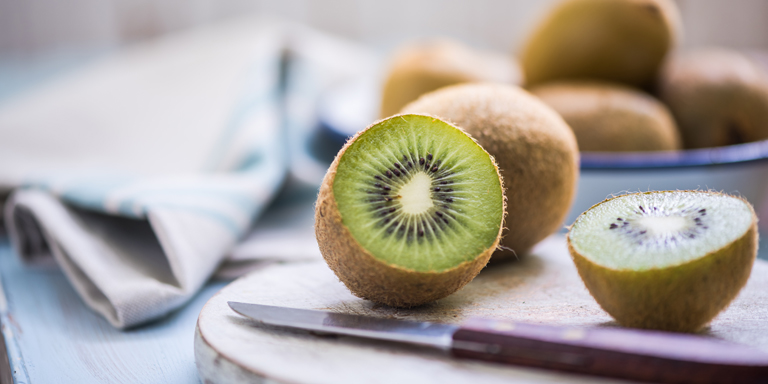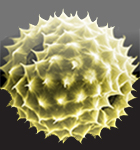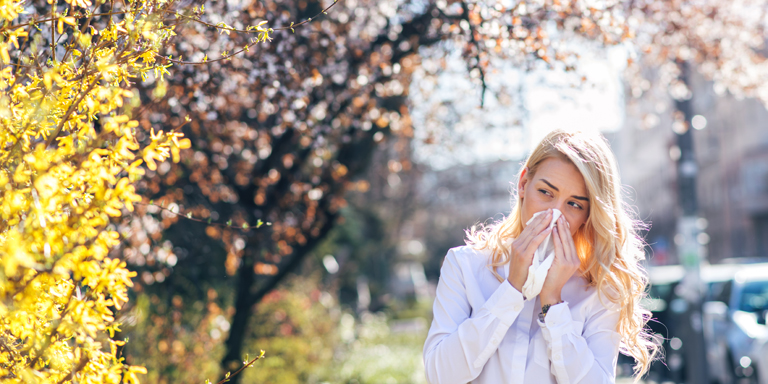Cross-reactions
It is often the case that someone who has an allergic reaction to tree pollen or house dust mites, for example, is also unable to tolerate certain foods due to a cross-reaction. In rare cases, such a cross-reaction may also occur with allergies to animals and latex.

Table of contents:
A cross-reaction can be explained by the similarity in structure of allergens in specific pollens and plant-based foods. As a result, the immune system, or more precisely the IgE antibodies that target the pollen allergen, also identify the similar food allergen as dangerous and trigger an allergic reaction.
Causes and triggers
In this secondary food allergy, initial sensitisation occurs when allergens such as birch pollen are breathed in from the air, hence the use of the term “secondary”. Because specific proteins in pollen or pollen allergens are similar in structure to specific allergens in fruits, vegetables and nuts, the immune system has an allergic reaction to both, resulting in a cross-reaction. Such cross-reactions are common: approximately 70% of those allergic to birch pollen have a cross-reaction.
Two cross-reactions are particularly common: birch pollen-nut-pip fruit and mugwort-celery spice syndrome.
There are other respiratory tract allergens apart from pollen that may, more rarely, cause a cross-reaction to foods, e.g. latex (natural rubber), animal allergens (e.g. cats, birds) and house dust mites.
The following cross-reactions are typical:
Allergy to birch, alder and hazel pollen (January–April
Stone and pip fruit (apples, pears, plums, apricots, cherries, nectarines, etc.), hazelnut, walnut, almonds, carrots, celery, kiwi fruit, soya, mung beans, peanut
Allergy to mugwort pollen (Artemisia) (end of July–September)
Spice, celery, carrots, fennel, camomile, pepper, mustard, dill, parsley, coriander, caraway, aniseed, sunflower seeds, lychee, mango, grapes, peaches, cashew
Allergy to hemp (all year round)
Fruit and vegetables
Allergy to house dust mites (all year round
Prawns, lobster, langoustine, crab, snails, insects (as food)
Allergy to late
Avocado, bananas, sweet chestnut (vermicelli, roasted), kiwi fruit
Allergy to bird feathers
Chicken eggs (yolk)
Allergy to cat
Pork
Symptoms
Typical symptoms in a birch pollen-related food allergy are a tingling sensation in the palate, burning around the mouth and on the lips and possibly even swelling around the mouth and lips after eating raw food. This is known as oral allergy syndrome. The symptoms usually soon disappear. However, in rare cases, severe symptoms such as allergic shock may also occur.
Treatment
In principle, it is best to avoid eating any foods that cause symptoms. However, this is not so straightforward in practice. For example, in birch pollen-related food allergy, the allergens responsible are destroyed when cooked or heated, which means that the food in question can then be eaten. This, however, does not apply for all food allergies triggered by a cross-reaction.
If an allergenic food is eaten by mistake, anti-allergy medication such as antihistamines can be helpful.
Occasionally, desensitisation treatment for a pollen allergy also alleviates the food allergy.
Editors: aha! Swiss Allergy Centre in co-operation with the Scientific Advisory Board.




